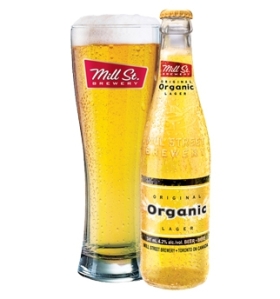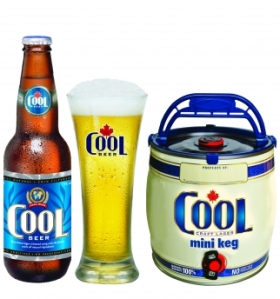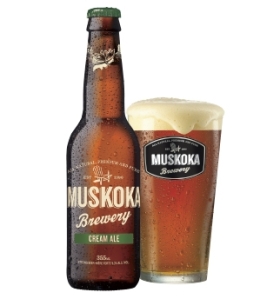Some will remember the general fur-flying that resulted from the Craft vs. Crafty debate. For those who weren’t following craft beer at the time, the fight began when the Brewer’s Association sent out a statement which called attention to a number of products which, although marketed as craft and independent, were actually owned, and in some cases created by large brewers such as InBev, Miller-Coors etc. However, association also saw fit to release a chart which detailed which breweries were and were not ‘craft’.
What followed were endless arguments about the nature of craft beer and specifically what should and should not fall under the craft umbrella. While I personally felt the core issue was the deceptive marketing of big-beer products as independents, there was a great deal of spill-over. One group that seemed to catch quite a bit of shrapnel and continues to divide opinions in the craft community is small brewers who produce ‘regular’ beer. Indeed, August Schell Brewing particularly took offense to being dismissively written off as an ‘adjunct brewer’ and launched media counter-offensive.
The basic argument that I have heard from some goes something like this: “Small brewers who produce bland, mainstream beers are piggybacking on the work of legitimate craft brewers, who are seeking to produce something of higher quality and more interest. They are taking the easy way out and attempting to use the ‘cred’ of a craft brewer to market another indistinct, tasteless product. They make the craft scene less legitimate because people trying them will conclude that craft beer has nothing truly new to offer and simply costs more for snob appeal.”
Issue 1: De-Valuing the Pale Lager / Stock Ale
There are a number of derisive terms for the familiar golden-yellow lagers that the majority of people associate with the word ‘beer’: macro-lager, adjunct-lager, fizzy yellow stuff, etc. (to name the more polite ones). This may also apply to the equally familiar “Canadian Ale” or “American Standard” (think Labatt 50 / Molson Export). It is rare to see a beer brewed in these styles to climb out of the single digits in ratebeer’s /100 scale. While I will admit these are not styles I actively seek out, the vitriol with which some attack these beers ultimately undermines the seriousness of the argument. Clearly, this is something which appeals to a sizeable number of palates. Even among those who have tried and enjoy the more traditional craft fare of IPAs, Imperial Stouts, Belgian Strong Ales and Barleywines, there are some who will openly and unashamedly profess a liking for a basic, American-style pale lager. Do they represent a disproportionate amount of the beer sold? Sure. But at the same time, those who enjoy a good sour ale might bemoan the domination of hop-forward beers in the craft market. Simply because something is common does not make it bad.
Issue 2: The ‘Easy Way Out’
Producing a well-balanced pale lager or stock ale is not an easy task. Because the balance must be struck between such light flavours, a brewer must have a deft touch in order to make something the average person can stomach. Indeed, as anyone who has had the wrong ‘budget’ beer can attest to, a beer within this style can quickly turn offensive if not given the requisite care and attention.
For some, the ‘easy’ part comes with the fact that the style is so popular. This is to say that a craft brewer is not really taking on the challenge of producing craft ales when they either focus on or include pale lagers which have inherent mass appeal. To this I would say, firstly, any start-up business is a risk, particularly a brewery. Whether the brewery’s debut effort is a macro-lager style beer or more intense product they are in a precarious position. As well, in looking at current trends, it doesn’t appear (to me) that a small brewer is significantly advantaged by having a pale lager in their repertoire. Muskoka Brewery, for instance saw major gains once they added a west-coast IPA, a product which remains their number one seller.
Issue 3: The Legitimacy of Craft Beer
For me, the goal of craft products is two-fold: (1) to get people to understand what they are drinking and who they are supporting; (2) to create a market which will sustain creative endeavours. As such, I do not see a problem with local, small operations making a mainstream lager either as or in addition to their core line-up. Even someone who sticks within the realm of pale lagers can access a locally-made product and perhaps glean a bit more knowledge about the brewing process, the ingredients that go in to it and why supporting small brewers is a good thing.
A Real Problem
On area in which I can see a legitimate problem is in the mislabeling or intentionally misleading marketing of these beers as advanced or challenging beers. This is more of a problem with ales where the assumptions are slightly different. Indeed, a craft brewer often has to fight past negative connotations when making a lager of any sort so buyers might be less circumspect about something top-fermented. In this sense, yes, a brewer who is advertising a beer below 20 IBUs as “bitter” or something with relatively light flavour as “malty and complex” is undermining the claim of more advanced products. That said, such beers tend to be flagged quite quickly in the craft community and perhaps don’t represent as much of a danger when not being bought.
Overall, then I would say I do not see a problem with small brewers producing mass-appeal products so long as they are forthright in doing so. They may well be the vehicle that gets small brewers more of a voice and, in my view, they do nothing to detract from those seeking to make more advanced products.
Some ‘Normal’ Beers to Try:
I suggest these both as something to educate your palate and also as beers to introduce to non-craft drinking friends to make your pitch for drinking local.
Mill Street Brewery Orginal Organic Lager: 4.2% ABV / This claims to be Ontario’s first certified organic product. It is an ‘easy-drinking’ product with rather gentle flavours of cereal and a muted herbal hoppiness. It comes in cans, bottles and is available almost anywhere in Ontario. If you feel your crowd may not go for an organic product try the full-strength Stock Ale:
For other ‘premium’ beers of similar description try: Amsterdam Brewings (416) Local Lager or Natural Blonde; Cameron’s Lager; Lake of Bays Rockcut Baysville Lager;
Cool Beer: 5% ABV. This beer is a rather mercifully priced, locally made alternative to the major brands. The labelling tactfully hints at the sort of beers this product apes and it falls right into line with any major brands’ main-line offerings. Can be purchased in 4 packs for about $5 or in a miniature keg for far less than the bottled or canned equivalent amount of beer. Cool beer also deserves respect for contract brewing Denison’s Weissbier and Dunkel (at least until Side Launch gets underway).
For more independent ‘budget brands’ check out the spread put out by Brick brewing under brands such as Waterloo, Brava, Red Baron, and the somewhat infamous Laker and/ or the ‘True North’ brand put out by Magnotta, who is known more for their wine.
Muskoka Brewery Cream Ale: 5% ABV. Long before Muskoka went Mad (or even Twice as Mad) with hops, they were producing much a range of ‘session’ (re: unassuming) ales and lagers. This cream ale (a hybrid of pale lager and golden ale) is just different enough to get the average beer drinker thinking but not so aggressive as to put them off. It might also help you introduce more advanced products by sticking to a brand you’ve made familiar.
Other independent cream ales include: Cameron’s Cream Ale, True North Cream Ale



